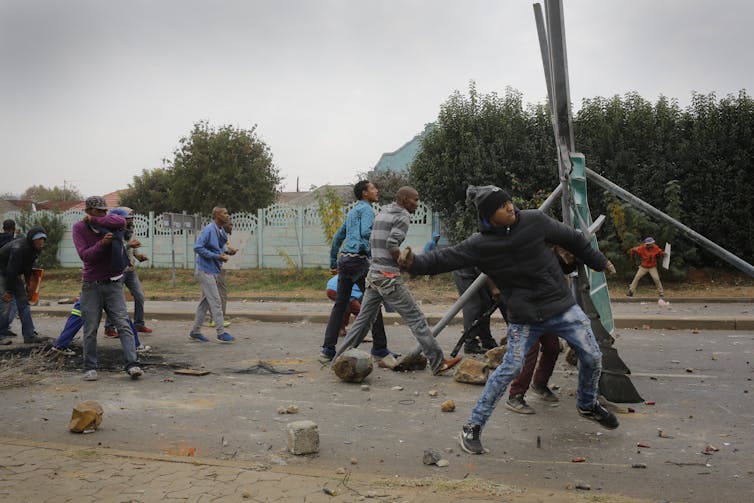
Land is a contentious and emotive issue.
Jon Hrusa/EPA
Land reform remains one of South Africa’s most pressing unresolved issues. Attempts to address skewed ownership and economic participation patterns, the result of many years of exclusion and dispossession of black South Africans, have been unsuccessful since 1994. The present government has now turned to possible changes to the Constitution to deal with these failures.
But recent public hearings into these possible changes have highlighted the importance of understanding identity and relationships between groups – not just economics or material wealth – for resolving sensitive issues such as these. The hearings show that fixing the problem of land reform isn’t as simple as dealing with legal necessities, or simply parcelling out land to new owners.
Land reform is much more complex because it involves issues of identities and intergroup relations, as my recent study of agricultural land owners’ views shows. The study is based on extensive interviews conducted with 40 land owners in the Limpopo province of South Africa.
I found that land owners don’t see land as only of economic value. It carried deep symbolic value too. Land (and the ability to own and develop it) is closely related to owners’ identities and their sense of belonging.
The study also showed that land owners were critical of reform initiatives that seem to be motivated by what they perceived to be political agendas rather than agricultural ones. They thought differently about land reform when they believed they were perceived as “farmers” rather than just as representatives of a race.
Land owners, the study revealed, can see the potential of reform for establishing lasting relationships. This suggests that the solution to land reform in South Africa lies in relationships between groups, not just in dividing up material goods. What is more, owners appeared more willing to try reform at a community level than at a level where government officials are involved. This was because people depended on each other in communities.
A final important finding was that land owners felt the current debate portrayed them as being opposed to reform rather than cooperative. This interpretation arises partly from landowners’ own prejudices (this includes racial, class and ideological prejudices) and partly from the way in which certain land reform narratives are publicly constructed.
The research
Unfortunately much of the current discussion about land reform is conducted in ways that suggests only winners and losers, “us and them”, inclusion and exclusion. For example, talk about “returning the land to our people” can unintentionally imply that those who currently own land are not “our people”.
There is probably no single formula that will transform the entire debate, but there are a few things everyone can do. And they are not only the responsibility of political leaders.
First, the public discussion needs to make land reform a South African problem rather than a racial problem. People have shown that it is possible to adopt more inclusive identities when there is a shared dedication to such an identity. The way in which South Africans of all backgrounds rallied around the 1995 Rugby World Cup winning team bears witness to this. This is an example of people uniting behind an overarching identities.
Second, the discussion should emphasise that the solution will come when people depend on each other. Research has shown that if competing groups face problems that have dire consequences for all of them (and all acknowledge these consequences), and if the solution lies in cooperation, conflicting social identities matter less.
Shifting the debate
Some may argue that these suggestions are naïve. They may be correct. But the debate can’t continue in the same old way. Something has to change in the interests of future generations of South Africans.
The conflict associated with land reform will not be addressed by simply redistributing land according to whatever targets are chosen. If reform disregards how South Africans relate to each other in terms of their social identities, the underlying conflict will remain long after any reform process is concluded.
Gert Young, PhD graduate at the Department of Political Science; Senior Advisor: Higher Education, Stellenbosch University
This article is republished from The Conversation under a Creative Commons license.






